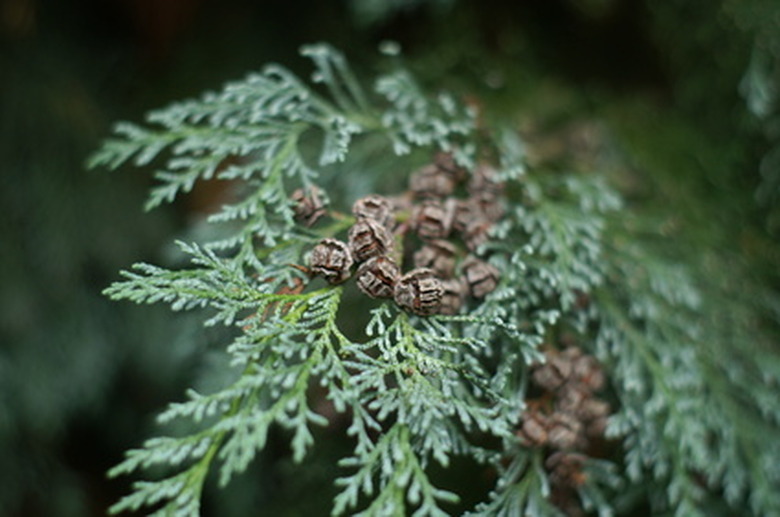How To Transplant Cypress Trees
Things Needed
- Pruning shears (optional)
- Sharp shovel or spade
- Tarp
- Conifer fertilizer (optional)
Cypress trees are conifers, a type of evergreen, and may be transplanted at various stages in their growth. It's easier to transplant a smaller cypress tree than it is a larger one, but either can be accomplished using the same method and proper attention. Take special care when transplanting cypresses to preserve their root ball. The best time to transplant cypress is in the fall.
Step 1
Prune off any dead, old, or unwanted branches before transplanting, if desired. Lower branches that may get in the way of transplanting are good targets.
Step 2
Dig a circle around the outer edge of the root ball with a sharp shovel. The diameter of the edge depends on the size of the tree, and should be about halfway between the trunk and where the outermost branch reaches. Cut down with the shovel evenly, facing the tree as you go.
- Cypress trees are conifers, a type of evergreen, and may be transplanted at various stages in their growth.
Step 3
Turn 90 degrees to the circle, facing sideways to the tree. Dig a trench outside the circle, making small shovelfuls to avoid breaking up the root ball. Face the shovel sideways to the circle to reduce root injury.
Step 4
Deepen the trench. Dig it another 1 foot deep, now facing in toward the tree, and at an angle. When you've completed one circle, turn sideways to the trunk again.
Step 5
Enlarge the trench, aiming to get under the root ball. With cypress, this usually will not be more than 1 or 2 feet down. Remove as much soil as you can while still leaving the main root ball in one piece. Stop when you can rock the root ball back and forth easily.
- Turn 90 degrees to the circle, facing sideways to the tree.
- Dig a trench outside the circle, making small shovelfuls to avoid breaking up the root ball.
Step 6
Slide a bunched-up tarp under one side of the root ball. Then lean the root ball toward the tarp and, with the help of another person, pull an edge of the tarp all the way under so that it holds the root ball. Unfold or pull the tarp so the root ball is centered on it. One or more people then can grab the tarp at its corners, evenly supporting the root ball for transportation.
Step 7
Prepare a new planting hole for the cypress. Dig a hole twice the size of the root ball in width, but just as deep as the root ball's height. It's better to place it a few inches too shallow than too deep. Place the root ball in its new hole and re-cover it with the soil you removed.
- Slide a bunched-up tarp under one side of the root ball.
- Then lean the root ball toward the tarp and, with the help of another person, pull an edge of the tarp all the way under so that it holds the root ball.
Step 8
Water thoroughly after transplanting to get rid of any air bubbles in the soil. Fertilize lightly with a conifer fertilizer, if desired.
Tip
If you know a year in advance that you’ll be moving a large tree, prepare the roots. Cut and dig the circle trench ahead of time, forcing the roots to develop within the ball part of the system rather than spreading out. For large or heavy trees, make a ramp of dirt or scrap wood from the hole to the surface, to help move the root ball out of the hole.
Warning
Sharpen the edges of all tools you will be using. Sharp edges mean easier digging and cutting, and less injury to the tree roots, as they will be cut, not crushed. Check the type of cypress you have. Monterey cypress is one that is known for its large tap root, and you may have to dig down farther to avoid severing it and harming the tree.
